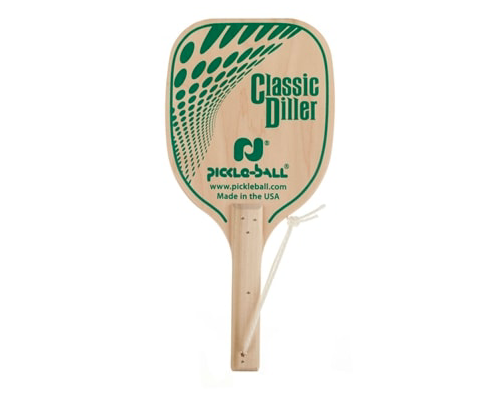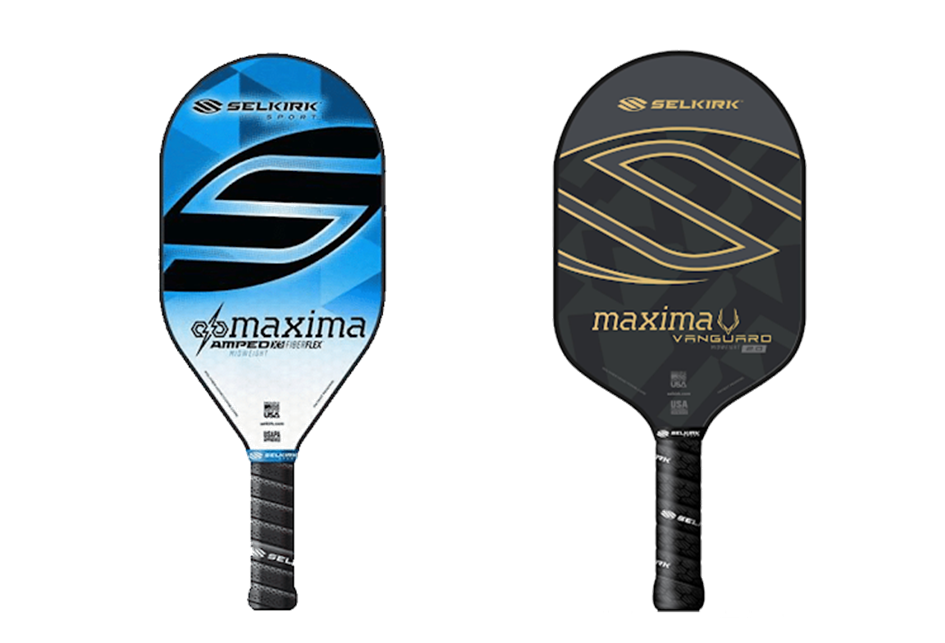If there is one thing lacking about pickleball it’s definitely not the shortage of paddles to select from. Newer players ask me “what should I be using?” all the time, but the truth is that they probably should be playing a lot more and getting used to the sport before committing to a paddle.
The variances can come from core material, face material, weight, grit, and price. These differences can also be very subtle or quite obvious, so unless you know what you’re looking for it might be hard to understand what is “best for you”.
One obvious difference between the large amounts of paddles on today’s market is the variety of paddle shapes. Here is a breakdown of well-known paddle shapes along with what I think are the pros and cons per type...
To stick within USA Pickleball regulations, paddles must stay within 24 inches in total (length + width) and the paddle face cannot exceed 17 inches.
Standard/Classic
If you ask 10 people what they think the “standard” dimensions of a paddle are, my guess is that opinions will be split down the middle with two different answers: 16” x 8” or 15 ¾” x 7”.
Back when I worked at a private racquet club and bought the first set of pickleball equipment, I selected the old-fashioned wooden paddle. The Classic Diller paddle as seen below has measurements of 15 ¾” x 7.5”.
Not surprisingly, this paddle has been discontinued but this is what I am basing my opinion on; a paddle that is 8 inches or wider falls under the category of “widebody”, but yes, there are some discrepancies.
All that said, the standard shape is great for offering a bit of everything one would want from a paddle: power, control, and maneuverability. Generally, a standard-shaped paddle will come with a standard 5-inch long handle, but some classic shapes offer a slightly shorter handle as well.

Photo credit: Pickleball Inc.
Advantages:
- As mentioned already, this classic shape usually offers good reach, maneuverability, power and control
- Every brand sells a classic shaped paddle so you can make a choice based on brand and will come in a variety of materials to choose from as well
- Because it’s a classic shape, most of these paddles will not be discontinued, so you can stick with something you love and run with it
- For what it’s worth, these paddles are appealing to the eye
Disadvantages:
- Out of the assets this shape provides (maneuverability, power and control) there isn’t an extreme advantage one way or the other, it is a very balanced paddle shape
- Standard sweet spot, if you’re looking for a forgiving paddle, then you’re probably after an option with a larger sweet spot
Elongated Face
This longer paddle will provide the ultimate reach vertically and laterally. It’s important to keep in mind that there are two types of elongated paddles: one with a longer paddle face and the other has a longer handle.
Usually, anything longer than 15.5” and over the 7” width is considered an elongated type paddle. Incorporating a two-handed play style into your game can lead to great defense and ultimate ball control.
-Oct-13-2022-01-49-39-44-AM.png?upscale=true&width=608&upscale=true&name=unnamed%20(1)-Oct-13-2022-01-49-39-44-AM.png)
Photo credit: selkirk.com
Advantages:
- Supports the shorter (in stature) players
- Supports the type of player who can’t get low to the ball - often time have issues with their knees
- Creates a lot of power on overhead smashes
- Great paddle for singles play
- The sweet spot usually sits higher up the paddle face, so if you like to swing with the paddle further away from the body - like tennis players for example - then you may prefer this shape
Disadvantages:
- It long shape might cause you to lose a bit of maneuverability as it’s more length to move around
You could lose some hand speed and/or control as you shift the longer paddle from forehand to backhand quickly
- It’s not an overly popular paddle shape so paddles may become discontinued over time - for example the Selkirk Amped Maxima used to be long and narrow but the company has modified it to a wider yet slightly shorter shape and is now known as the Selkirk Vanguard Maxima (see images below)

Photo credit: First image was taken from pbsport.com and the second from selkirk.com
Elongated Handle
This paddle shape is somewhat newer and became popularized with the growing popularity of two-handed backhand. While you can still achieve a two hander with a 5” handle this type of paddle really encourages the player to use two hands. A lot.
As you can see in the image below, the longer handle, therefore, sacrifices the longer face, which means less paddle to work with. To hit consistently with this type of paddle requires the player to really watch the ball make contact with the sweet spot on the paddle each and every time.
-2.png?upscale=true&width=680&upscale=true&name=unnamed%20(4)-2.png) Photo credit: pickleballtown
Photo credit: pickleballtown
Advantages:
- Great choice for those with a two handed backhand
- Still supports the shorter (in stature) players
- Still supports the type of player who can’t get low to the ball - often time have issues with their knees
- Generates a lot of power on overhead smashes
- Can still be a great choice for the singles player
Disadvantages:
- The smaller paddle face It’s long shape might cause you to lose a bit of maneuverability and/or control as you shift from forehand to backhand quickly
- A hard paddle to use if you don’t have a two handed groundstroke
Widebody
These widebody paddles may not always appear wide but a paddle that is over 7 ¾” in width is often considered wider than the average shape. For newer players, this shape might provide a sense of control and power because they might not be hitting the sweet spot area as consistently.
-2.png?upscale=true&width=680&upscale=true&name=unnamed%20(4)-2.png)
Photo credit: pickleballtown
Advantages:
- Often provides a large sweet spot
- Provides the most surface area to work with out of any shape
You will feel confidence when controlling the ball
- Often comes with a shorter handle - this could fall under disadvantages depending on the size of your hand!
Disadvantages:
- A widebody paddle is generally around 8” but even then, this extra width can make the paddle feel cumbersome, especially if the thickness of the paddle is more than 15mm
- People who play with a slimmer paddle often compare the widebody shape to a frying pan
- The majority of widebody paddles lack the rounded top, therefore not maximizing on the size of the sweet spot
Some other shapes that are on the market would be the oval, diamond, and teardrop paddle. The oval arguably edges the diamond out with regards to aerodynamics, but the diamond-shaped paddle eliminates a paddle bumping the ground on those hard digs.
The teardrop, while it offers a good sweet spot, I can’t find a groove whenever I’ve played with this type of paddle. To really top things off, who here remembers this bear paw of a paddle?
-png.png)
Photo credit: pbzpaddles.com
This article was taken from our 'Control the Kitchen' Newsletter, if you're interested in receiving more content like this, please feel free to sign up using the subscribe section located at the bottom left of this page (or underneath the article if you're on mobile), thanks!